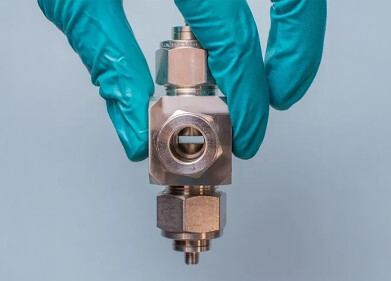Analytical Instrumentation
Why Did It Take So Long to Cut Oil Production?
May 16 2020
When oil prices slipped into negative territory for the first time in history in April, it left many observers scratching their heads. The dramatic price drop was triggered by lack of storage and oversupply, which forced many WTI producers to pay buyers to take oil off their hands. So, why did producers let the glut escalate to the point that oil prices were pushed into negative territory?
While the unprecedented price collapse came as a surprise, what was expected was the sharp decline in consumption caused by the COVID-19 pandemic. With industrial economies shutting down and air travel coming to a standstill, the energy industry was left with a surplus of oil and no buyers. Though instead of cutting production, producers continued to pump until capacity was depleted. So why not simply stop?
The costs of shutting down
There were many factors at play, one of the largest being temporary shutdowns of operations also costs money, potentially more than temporarily paying buyers to take it off their hands. Eric van Oort, an expert in expert in drilling and oil production at the University of Texas, says while shutting down a well at the surface is easy enough, “operators are generally reluctant to shut in their wells if they don’t absolutely have to, because they know they’re going to incur some damage on those wells.”
Water blockage is a major concern, with shutdowns forcing a recalibration of the oil to H2O ratio. This is because pipes are no longer sucking on rock fissures and extracting excess water. As a result, droplets can collect in the fractures of permeable shale wells and hinder the movement of oil when the well is started up again. As shale wells often generate small profit margins, compromising productivity is not always an option. “It is always best to leave the well alone once you go to production,” adds van Oort.
Small scale producers hit hard
For smaller scale oil producers, the impact of the COVID-19 pandemic has been hard hitting. In response to the low prices ushered in by the coronavirus outbreak, around 2000 smaller US producers were forced to shut down wells. Most were independent or privately-owned producers pumping less than 20,000 barrels per day. Analysts warn that to start up again with prices still so low could cause serious damage to the bottom lines of these smaller players, who don’t have access to the same pipeline and storage facilities as giants such as BP and ConocoPhillips. Unlike oil and gas majors, most smaller companies also have no financial cushion to fall back on.
“The brunt of the pain is being felt by small companies with fewer wells,” says Frederick Lawerence, a representative from the Independent Petroleum Association of America. “It is one thing when prices are down, but this twin calamity with COVID-19 is a fall to earth without a parachute.”
Alongside planned shutdowns, unexpected closures can also compromise productivity. Exploring how asset performance management technology can help prevent shutdowns, ‘How Downtime is Preventing Refineries from Boosting Their Environmental Credentials’ offers insight from John Hague on behalf of Aspen Technology, Inc.
Digital Edition
PIN 25.5 Oct/Nov 2024
November 2024
Analytical Instrumentation - Picturing Viscosity – How Can a Viscometer or a Rheometer Benefit You? - Sustainable Grease Formulations: Evaluating Key Performance Parameters and Testing Method...
View all digital editions
Events
Dec 03 2024 Dusseldorf, Germany
Dec 08 2024 Anaheim, CA, USA
Turkey & Black Sea Oil and Gas
Dec 11 2024 Istanbul, Turkey
Dec 19 2024 Aurangabad, India
Jan 20 2025 San Diego, CA, USA



















